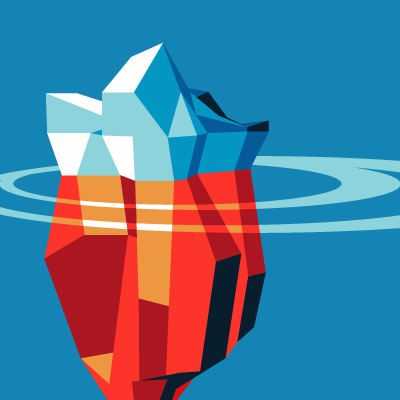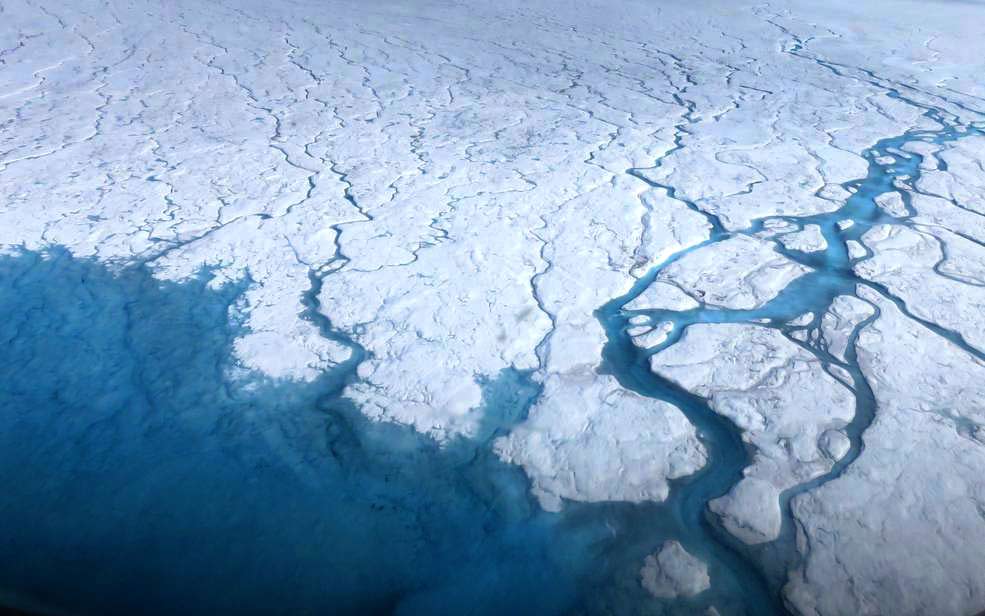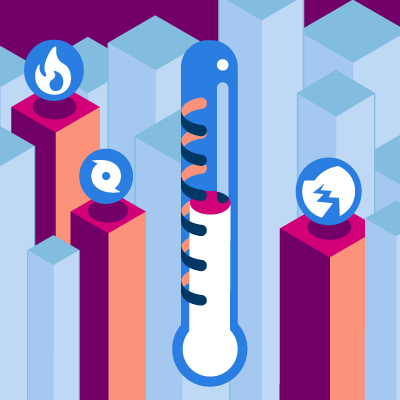
The Arctic and Antarctic regions have been bellwethers for climate change for decades. It has been an unfortunate reality that both the north and the south polar regions have been warming at more than twice the global average.
This arctic amplification, as it is known in the Northern Hemisphere, is linked to the melting of the Greenland Ice Sheet, which has accelerated over the last couple of decades with no slowdown in sight. The really bad thing is that Greenland still has a lot of ice left—at least for the time being. Melting sea ice cannot raise sea levels. But, if all the ice were to melt on the Greenland Ice Sheet, it would raise water levels by 7 meters!

What’s Going On
The direct impact of melting polar ice on both land and water temperature is: as highly reflective ice and snow melt, a darker surface (water or land) is exposed, which can then absorb solar radiation rather than reflect it back to space. The absorption of heat energy at the Earth’s surface further warms the atmosphere, which causes more ice and snow to melt in an increasingly rapid cycle. More moisture in the atmosphere from higher temperatures and the evaporation of melted ice also contribute to the warming process because water vapor is a very efficient greenhouse gas.
This whole sequence is an example of a positive feedback loop—global warming is melting ice, thus reinforcing global warming, which amplifies ice loss. In its most extreme state, some believe it could lead to a runaway greenhouse effect where atmospheric temperatures soar to more than 900° C and boil the oceans away—but not for another 3 billion years. Still, there’s nothing positive about this positive feedback when it comes to our climate and our environment even now.
Not So Permafrost
A recent article noted that the last 47 years of data has uncovered dramatic change in nine different indicators, such as an increasingly fast hydrological cycle (precipitation, evaporation, precipitation) and reduced ice thickness. On Greenland, the melting ice is uncovering permafrost, which is soil (mass) that has been frozen year-round for the last 3 million years.
Before it was frozen, plants grew and animals thrived. When those life forms died, their carbon-based molecules (carbon dioxide, or CO2, and methane, or CH4, to name two) were trapped in the soil. This is called a carbon sink. But as the ice in the region has been rapidly melting for the last 20 or so years, and the permafrost is starting to, that trapped carbon and water are being released. As one can imagine, this is further exacerbating climate change worldwide. It is estimated that 50% of the world’s carbon trapped in soil exists in the Arctic. The thawing and collapsing permafrost also affects the health of boreal forests and the other plants and the animals in those ecosystems, which could further impact the extent and capacities of carbon sinks in the region.
Weaker Polar Vortex
The Arctic amplification has also been contributing to extreme weather farther south. As noted in a previous blog, the polar vortex, which is in the stratosphere—above where weather actually occurs—has been exhibiting weak states for longer periods of time during (boreal) winter over the last 40 years of available data. These weak states are manifested as polar and arctic air shifting farther south and contributing to intense snowstorms in the U.S., Europe, and Asia.
It is worth noting that the oozing of that cold air farther south also means additional warmth in the Arctic and reduced ability to build ice back up during the winter before melting begins in earnest again in the warm season. This is another part of the insidious positive feedback loop I mentioned earlier.
Slowing Waves
The resulting decrease in the pole-to-equator temperature gradient is also likely influencing the large planetary-scale waves in the atmosphere responsible for transporting weather systems across the mid latitudes. Not only do these waves act as tracks for weather systems, but they themselves also move.
Some studies have noted that as the Arctic continues to warm and the temperature difference between Canada and the Caribbean continues to decrease, these waves will become more frequently trapped and thus unable to move as quickly around the globe, and become more intense. The net result is that weather systems can impact the same area for longer periods of time. That can mean more numerous and more intense storms, floods, heat waves, wildfires—oh, and cold and snow as well, at least for the time being. These slowing waves may also be impacting the speed with which tropical cyclones move and may have contributed to the record precipitation amounts from hurricanes Harvey (2017) and Florence (2018).
By now everyone should be concerned about the global warming that is changing our climate. But, we should also be even more concerned about the regional warming in the Arctic, for it is changing our world in unprecedented ways.



